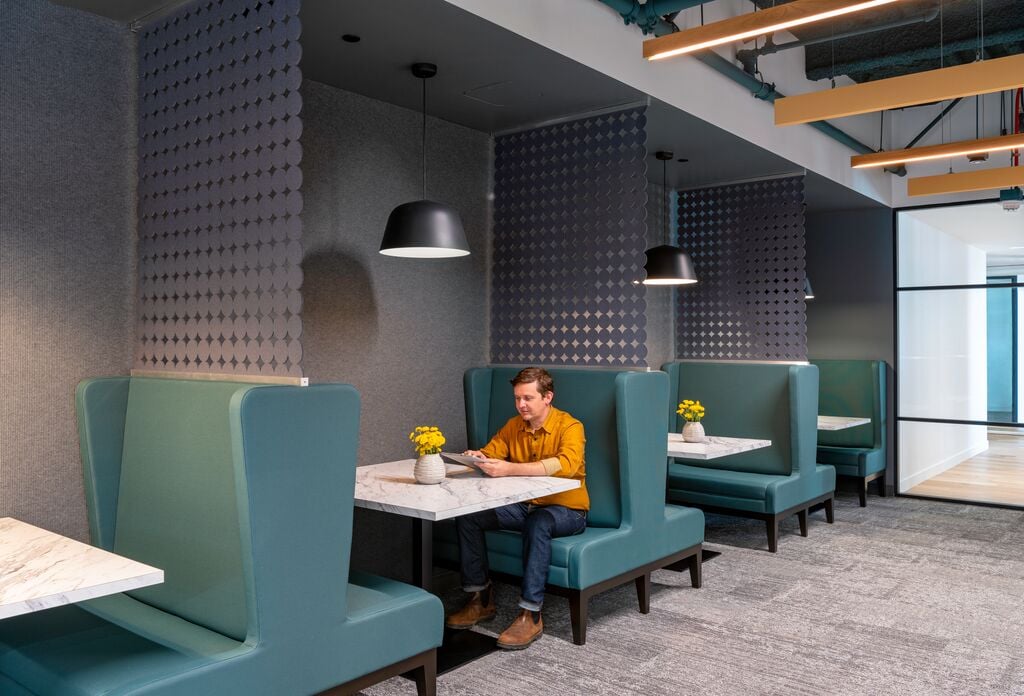
Acoustic comfort: the rhythmic clacks of a keyboard, birds chirping peacefully, a faintly humming white noise machine. If only it were that simple. In scientific terms, acoustic comfort is the perceived state of well-being and satisfaction with the acoustical conditions in an environment. Put simply, it’s a concept that recognizes the impact sound can have on worker concentration and anxiety levels.
Sound influences productivity and how well information is processed and retained. According to the National Library of Medicine, distractions in the workplace can contribute to over 90% of productivity loss for an organization. And, according to a 2018 study commissioned by Tarkett, an industry leader in flooring solutions, acoustics top the list of priorities for employees.
While there is a host of factors that contribute to disrupting focus, noise management within an office is a contributor that should not be ignored.
Facility managers have a lot of influence over the overall acoustical comfort of their spaces, from the use of subtle white noise to incorporating more soft, absorptive surface materials. Even in open offices, it’s still possible to manage acoustics by making informed furnishing decisions. Though noise is inevitable, whether from phone calls, office chatter, or outdoor construction and traffic, selecting materials that absorb sound will help manage the impact sound can have on employee productivity and wellness.
So how do we curb noise pollution in the workplace? Start from the ground up.
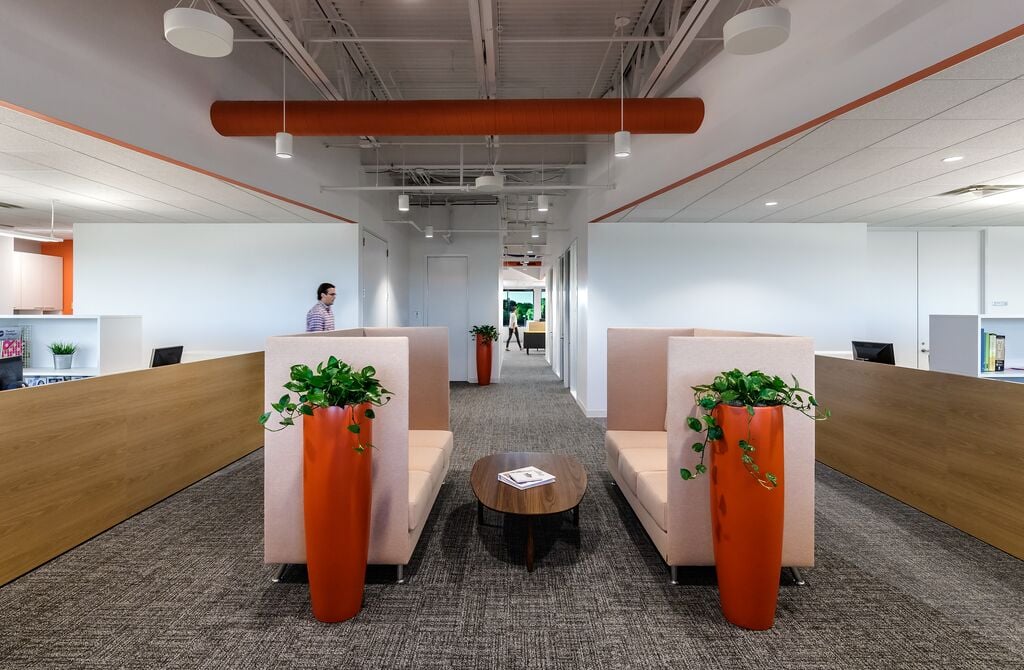
Tarkett’s GeoKnit carpet tile at Wilton headquarters helps ground this open workspace, both visually and acoustically. Photo credit: @balloggphoto.com
Sound-absorbing floors lay the groundwork for acoustic comfort. Specially designed floors can limit reverberation time, reduce disruptive sounds such as footsteps, and lower background noise. Whether your building has segregated offices, cubicles or an open floorplan, the floor is one of the office’s largest surfaces and presents an opportunity to immediately absorb distracting noise. Thanks to advanced design and technology today, sound-absorbing floors are no longer limited to soft surfaces. With a number of acoustic-friendly resilient floors available, designers and facility managers can enjoy a breadth of options no matter their design or performance needs.
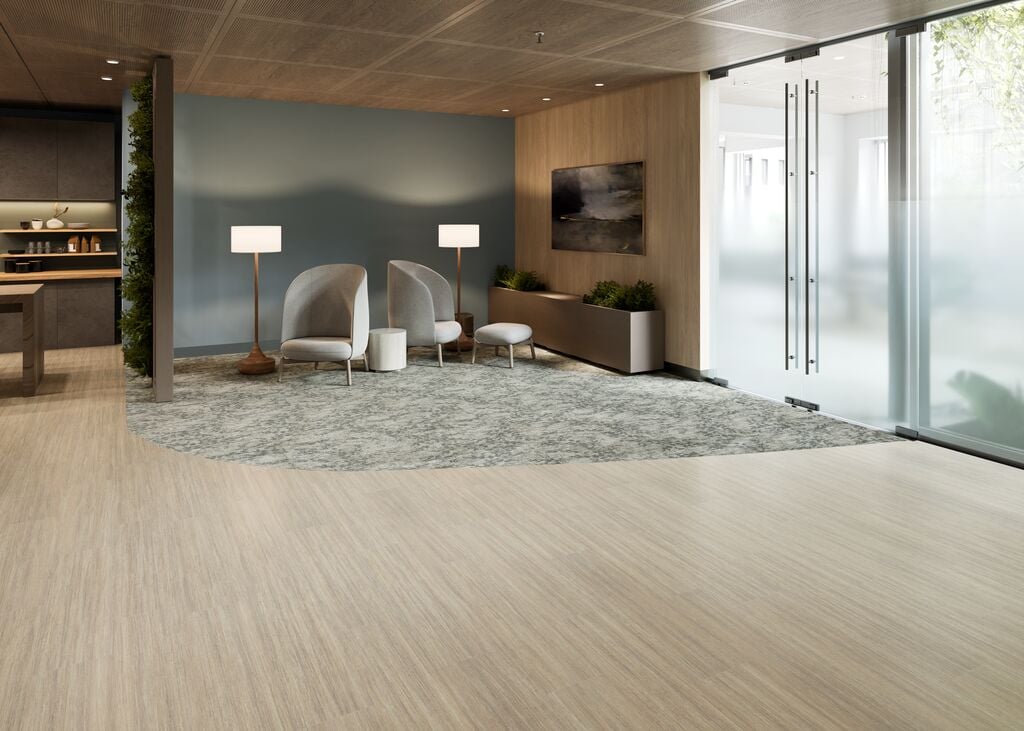 Tarkett’s Even Plane LVT absorbs sound 30% better than building code requires.
Tarkett’s Even Plane LVT absorbs sound 30% better than building code requires.
Depending on the structure of your office space, there may be existing furnishings that facilitate acoustic comfort. For example, soft, porous materials —rugs, chairs, curtains—provide a solution for absorbing unwanted sound. If possible, acoustic panels on ceilings, vertical sound absorbers, and even lighting are also available options. 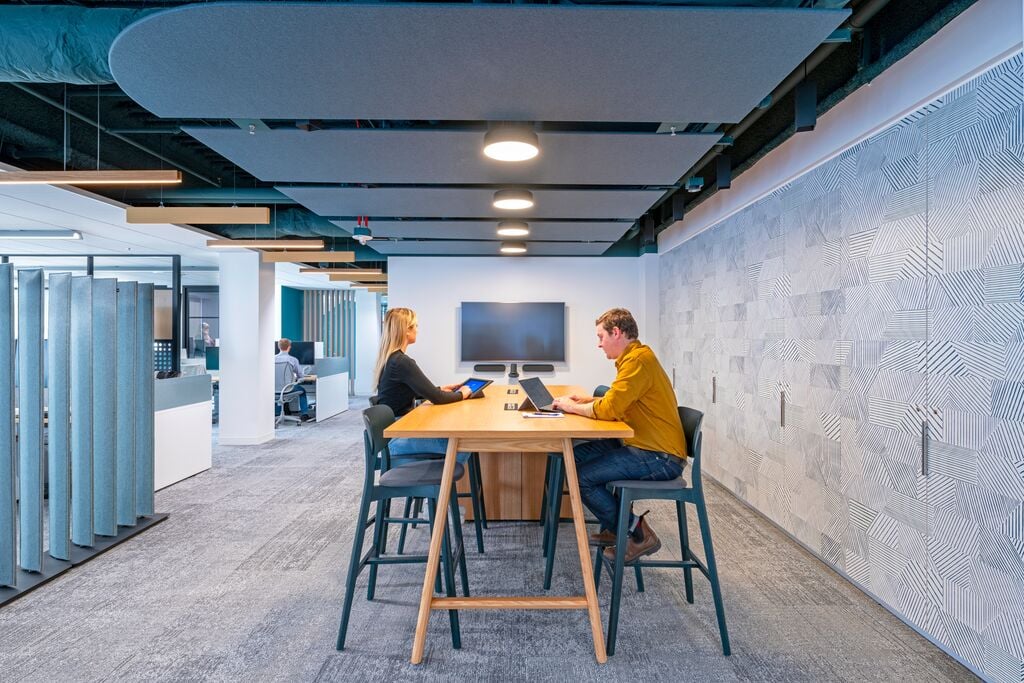
Vertical space dividers, ceiling panels, and Tarkett’s Marled Tweed carpet tile help soften acoustics in this collaborative workspace. Photo credit: Jasper Sanidad
Think of the goal as being sound management rather than complete soundproofing. A person’s sensitivity to noise is unique. In fact, how people process, manage and react to sound is intrinsic to one’s personality, so it could be distracting for some employees to work in an office that is totally quiet. Still, taking measures to generally improve workplace acoustics and making choices that strategically tackle noise pollution is a way to ensure that the overall environment is better functioning—for everyone.
Editor's Note: This blog is in collaboration with IFMA's Corporate Sustaining Partner, Tarkett. As the director of workplace segment markets for Tarkett North America, Derrell Jackson leads the organization’s strategic planning for market growth in corporate offices, life sciences and multi-family projects. He believes collaboration is the key to any organization’s success and is passionate about supporting Tarkett customers with the research and design strategies needed for evolving the future of workplace environments.












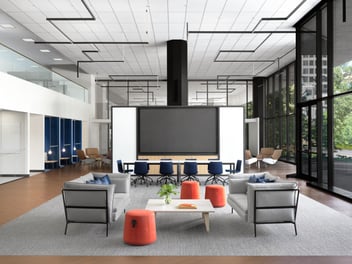
-1.png?width=352&name=Blog%20Graphics%20(6)-1.png)
